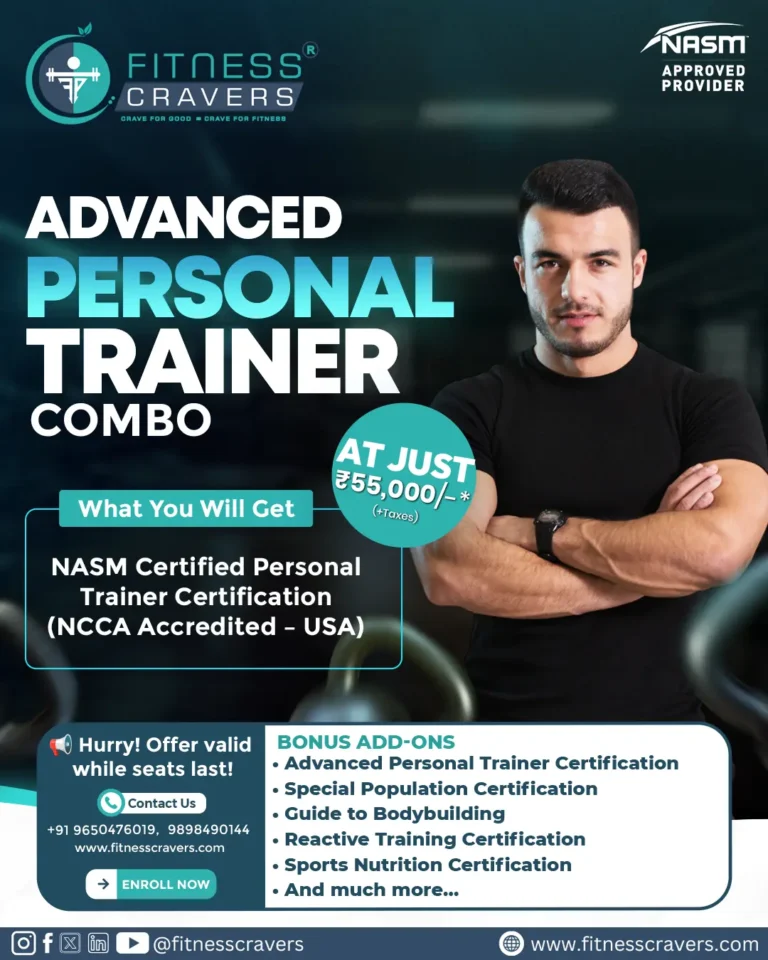Strength & Conditioning Coach
NSQF Level: 6
SPF/Q1111: Strength and Conditioning Coach
Brief Job Description
Applicable National Occupational Standards (NOS)
Compulsory NOS
Qualification Pack (QP) Parameters
SPF/N1134: Plan strength and conditioning program
SPF/N1135: Implement strength and conditioning training
SPF/N1136: Evaluate athletic performance and create athlete profile
SPF/N1122: Maintain health and safety standards
SGJ/N1702: Optimize resource utilization at workplace
Assessment Guidelines and Weightage
Assessment Guidelines
Assessment Weightage
Acronyms
Glossary
.png?updatedAt=1694431916402)
.png?updatedAt=1694432743505)
Brief Job Description
A strength and conditioning coach is a fitness and physical performance professional who uses exercise as
a tool to specifically improve performances in sport.
Personal Attributes
Strength and conditioning coach should possess the passion for fitness, sports and be physically fit. They
should be self-motivated, energetic individuals and have an approachable demeanor.
Minimum Educational Qualification & Experience
Graduate with 3 Years of experience working in
gym, sports academy as a trainer/coach
OR
Certificate-NSQF (Personal Fitness Trainer/Group
Fitness Trainer or Community Sports Coach)
with 2 Years of experience working in gym,
sports academy as a trainer/coach
Description
This unit is about designing a strength and conditioning program for the development of athletic
performance.
Scope
The scope covers the following :
Conduct need analysis of athletes
Develop a strength and conditioning plan for the year
Elements and Performance Criteria
Conduct need analysis of athletes
To be competent, the user/individual on the job must be able to:
PC1. analyse the performance requirement of the athletes highlighted by the sports
coach/manager
PC2. record the personal, medical and training history of athletes
PC3. conduct movement analysis (body and limb movement patterns and muscular involvement)
of athletes
PC4. conduct physiological analysis (strength, power, hypertrophy, and muscular endurance
priorities) of athletes
PC5. injury analysis (common sites for joint and muscle injury and causative factors) of athletes
PC6. conduct speed, agility and quickness (SAQ) tests
PC7. conduct functional performance tests (FPT)
PC8. analyse the information collected (training history, skill, knowledge, etc) and fitness reports
to identify the needs of the athletes
PC9. maintain confidential information as per legal and organizational procedures
Develop a strength and conditioning plan for the year
To be competent, the user/individual on the job must be able to:
PC10. plan training goals in conjunction with the sports coaching staff/ team manager
PC11. plan an integrated training year incorporating stages of periodization (preparation phase,
competition phase, and recovery phase) in conjunction with the sports coaching staff
PC12. create training timetable for each phase (preparation, competition, and recovery) based on
the training goals
PC13. plan performance enhancement nutritional supplements with the help of a qualified
nutritionist
PC14. identify and plan for training space and equipment in the strength and conditioning facility
Knowledge and Understanding (KU) The individual on the job needs to know and understand:
KU1. periodization and its cycles
KU2. principles of sports planning
KU3. application of load and overload in performance training
KU4. season and off-season in sports
KU5. best exercise combinations based on need for athletes
KU6. basics of popular sports
KU7. basic anatomy, physiology and biomechanics
KU8. types of fitness tests and administering protocols
KU9. methods of collecting all the relevant health and fitness information
KU10. various elements of PAR-Q (Physical Activity Readiness Questionnaire)
KU11. types of sports injuries and recovery plans
KU12. ways to analyse the result of the collected information
KU13. policies to maintain athletes confidentiality and storage of information
KU14. code, policies and regulations of WADA (World Anti-Doping Agency)
KU15. difference between permitted and banned drugs/ supplements
KU16. factors affecting training program
Generic Skills (GS)
User/individual on the job needs to know how to:
GS1. analyze the needs, expectation and limitation of athletes
GS2. build rapport
GS3. maintain professional boundaries
GS4. learn the fitness and sports related policies
GS5. document health and fitness information
GS6. communicate in a clear and polite manner
GS7. distinguish between serious problem and smaller issues
GS8. learn about the latest nutritional updates
GS9. remain updated about developments in sports and fitness
GS10. educate athletes about health and fitness related topics
All NOS:
Compulsory NOS:
- SPF/N1134: Plan strength and conditioning program
- SPF/N1135: Implement strength and conditioning training
- SPF/N1136: Evaluate athletic performance and create athlete profile
- SPF/N1122: Maintain health and safety standards
- SGJ/N1702: Optimize resource utilization at workplace

